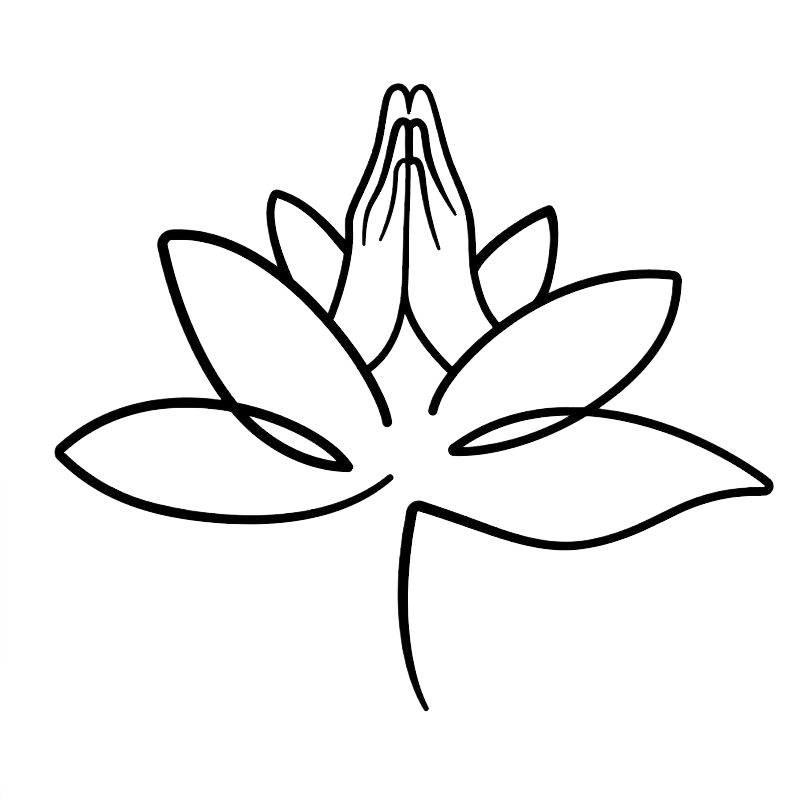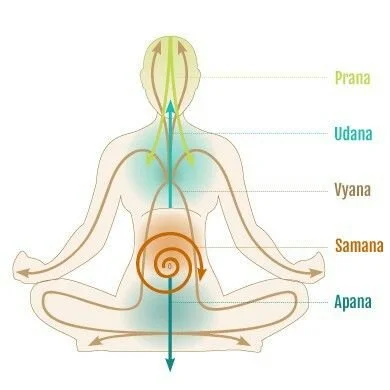Yoga for Men: Finding Balance and Vital Energy - A conversation with Julien
Charlotte and Julien flowing in Vietnam
Today, I want to address the topic of yoga among men in general. Originally, the spiritual practice of yoga was reserved for men, but nowadays, at least in Europe, yoga is more accessible to women.
It seems that showcasing yoga on social media as a flexibility-based practice puts some men off. The notion of “yoga for men” has started to emerge to attract them. However, yoga is a practice open to all, regardless of gender or background.
To give this article more visibility, I chose to title it “Yoga for Men.” It’s important to understand that whatever the reason we begin practicing yoga, what matters most is that it brings us inner peace and self-awareness.
Men often start yoga as a physical activity to gain mobility and flexibility. Then, little by little, a spiritual dimension opens up, and that’s what I want to share here through Julien’s perspective.
Meeting Julien
To better illustrate how yoga, which often begins as a physical practice through Asanas, can evolve into something that transcends the self, I met Julien, 30 years old, in Bangkok. It was actually in Vietnam, when I offered him more regular yoga classes, that I became interested in his perspective and wanted to share it with you.
C: Julien, could you introduce yourself as you wish, and tell us about your path before discovering yoga?
J: My name is Julien. I grew up in South Africa with a French mother and a South African father. My childhood was filled with various sports – soccer, rugby, judo, taekwondo, and tennis. I continued my studies in France and then worked for seven years in a dynamic, demanding, and performance-driven environment.
Julien worked in Paris in a large company, and before traveling, his life followed a 9-to-5 rhythm. It was actually an inner imbalance that led him to travel.
C: What type of yoga do you practice?
J: I started with Bikram, or hot yoga, and I gradually transitioned to Vinyasa.
To explain briefly, Bikram yoga was developed from Hatha yoga (the traditional yoga practice) by Bikram Choudhury. It is known for being practiced in rooms heated to at least 40°C.
C: How did you discover yoga? Was it linked to a specific need or life event?
J: I discovered yoga thanks to my mom. When I was on holiday in South Africa, I would join her regularly, and I quickly developed a liking for the practice. When I returned to Paris, I continued taking Bikram classes once a week, which I saw as a detox method.
C: Detox? Could you explain a bit more? I’m curious, why that word? What was your physical and mental experience?
J: By “detox,” I mean that I often practiced Bikram on Sunday afternoons after weekends of partying with friends. Because of the nature of Bikram, I would sweat a lot, and afterward, I felt completely emptied of everything my body no longer needed. Also, after a Bikram class, everything you consume, whether food, drinks, or substances seems to have a stronger effect, physically and mentally.
I highlight the word “detox” because I like to use a metaphor to help beginners understand yoga. I say that yoga wrings out the body; if the body is a sponge full of water, yoga through breathing exercises, habits, and postures wrings it out, expelling toxins and mental or physical distractions.
C: How did you view yoga when you started, and how do you see it today?
J: At first, I saw yoga, through Bikram, as a demanding physical practice that required strength and resilience, especially due to the heat. Today, I see it as a more holistic practice that integrates body, mind, and spirit. It’s a reconnection with myself and the world around me.
C: What has it brought you in terms of moving through life more intuitively and being more in tune with your body and its needs?
J: Moving through life allows me to release, realign, and reconnect to my deeper essence. When I move or do sports, I feel better, I sleep better, and I’m more present in my everyday life.
C: Could you explain what you mean by “reconnect to myself”?
J: In everyday life, we rarely take the time to empty our minds. But when I practice yoga, especially recently, I feel like I can set aside the noise of the world, distractions, and the social mask we often wear without realizing it. It’s a moment to center myself on who I truly am. Even though I don’t know exactly who that is yet, I feel like it’s a journey, a lifelong process.
° ° °
C: Has yoga had an impact on your relationships and your vision of the world?
J: I think that the more I practice yoga, the more I connect with myself, and therefore with the world around me. I feel more present, with a clearer mind and a healthier, more authentic connection to my environment. I believe I’m still at the beginning of my journey, with much more to discover through this practice about myself and my relationship to the world.
The Limits of Yoga
C: In your opinion, what are the limits of yoga? How do you approach them? Do you have any solutions?
J: I don’t see any limits right now, especially since I keep discovering new styles like Hatha, Flow, and Yin, and different approaches depending on the teachers I meet over time.
That said, practicing only yoga, without other physical activities, can create an imbalance. A more cardio-based practice can complement it well and help maintain overall balance.For me, I also need to express myself more freely, through dance and Psytrance, for instance. Creativity is how I listen to what my soul needs.
° ° °
It’s important to pair yoga with muscle strengthening. I believe that practicing only yoga in the long term can put strain on the joints. As a complement, I often recommend strength training or Pilates.
Through our conversation, I realize that yoga now offers Julien much more than just a physical practice. It helps him connect with his identity, and maybe even find his place in the world. But not just through yoga; there are many other practices: dance, art, singing, etc, that can help bring us back to our essence. Ask yourself what activity you do for pure joy, without effort, and that gives you a sense of self.
C: In your spiritual yoga practice, do you have specific expectations? What are you looking for?
J: Through the different classes and teachers I’ve encountered, I seek a multidimensional experience, something that activates not just my body, but also my soul and spirit.
For example, I find my practice more complete when it includes meditation, breathwork, setting intentions, and sensory elements like being in nature, listening to music, using sound bowls, essential oils, or incense. I also enjoy incorporating artistic elements (mandalas, sacred geometry), massage, or other energetic or esoteric activations that are still largely unknown.
C: What do you mean by energetic activation?
J: To be honest, I’m not exactly sure myself, that’s why I enjoy exploring different yoga styles and teachers’ visions. What comes to mind first is the use of crystals or elements. I’ve also heard about Reiki and White Tantra. I don’t know enough yet to have a clear opinion on how these integrate with yoga, but I’ve always been fascinated by energy work.
° ° °
In yoga, vital energy is called prana—without it, we cannot live. It’s a subtle energy that animates both body and mind.
According to Ayurvedic medicine (a traditional Indian system focused on balancing body, mind, and soul), prana is more than just vital energy: it’s the link between our body, mind, and the universe. We absorb prana from the air through breathing, from the sun and fire through light, from water through drinks and baths, and from the earth through food.
In our body, prana is expressed through five main currents, each with a specific role:
Prana: the driving force of life energy; it receives ideas.
Samana: responsible for food assimilation and mental processing.
Apana: manages digestion and the elimination of physical and mental waste.
Vyana: controls blood circulation and information distribution.
Udana: influences performance and positive mental effort.
The mouvement of Prana within the body - from Pinterest
As Julien explained so well, there are many ways to activate this energy. Stay curious and explore what resonates with you.
° ° °
C: What advice would you give to someone who wants to start practicing yoga but doesn’t know where or with whom to begin?
J: Start with curiosity, not with the pursuit of perfection. Yoga isn’t about touching your toes, it’s about touching your truth. Listen to your body, breathe with intention, and trust. Just show up with presence.
C: What do you think yoga can bring to your future personal projects?
J: As a tobacco smoker, I hope yoga will help me reconnect with my core essence and my breath. After a class, I often feel like I regain my breath, and I hope that, over time, this conscious breathing will override the bad habit. I believe yoga can help me stay aligned, centered, and in tune with my intuition. It’s a practice that reconnects me with myself and helps me move forward with more clarity, presence, and grounding in what I create.
C: What can we wish for you in your practice?
J: Wish me to stay curious, connected, and present. May my practice continue to evolve fluidly, guiding me toward more awareness, inner freedom, and alignment with who I truly am.
° ° °
We close this interview by wishing him to move more intuitively along life’s path, in alignment with himself and his essence.
Although I titled this interview “Yoga for Men,” I hope you see the irony in the title. Yoga is not for men, women, or children in particular. Yoga is for the spirit, for the essential energy that flows through us. Our body is the vessel that houses our essence, and yoga allows us to express that truth we all carry within.


